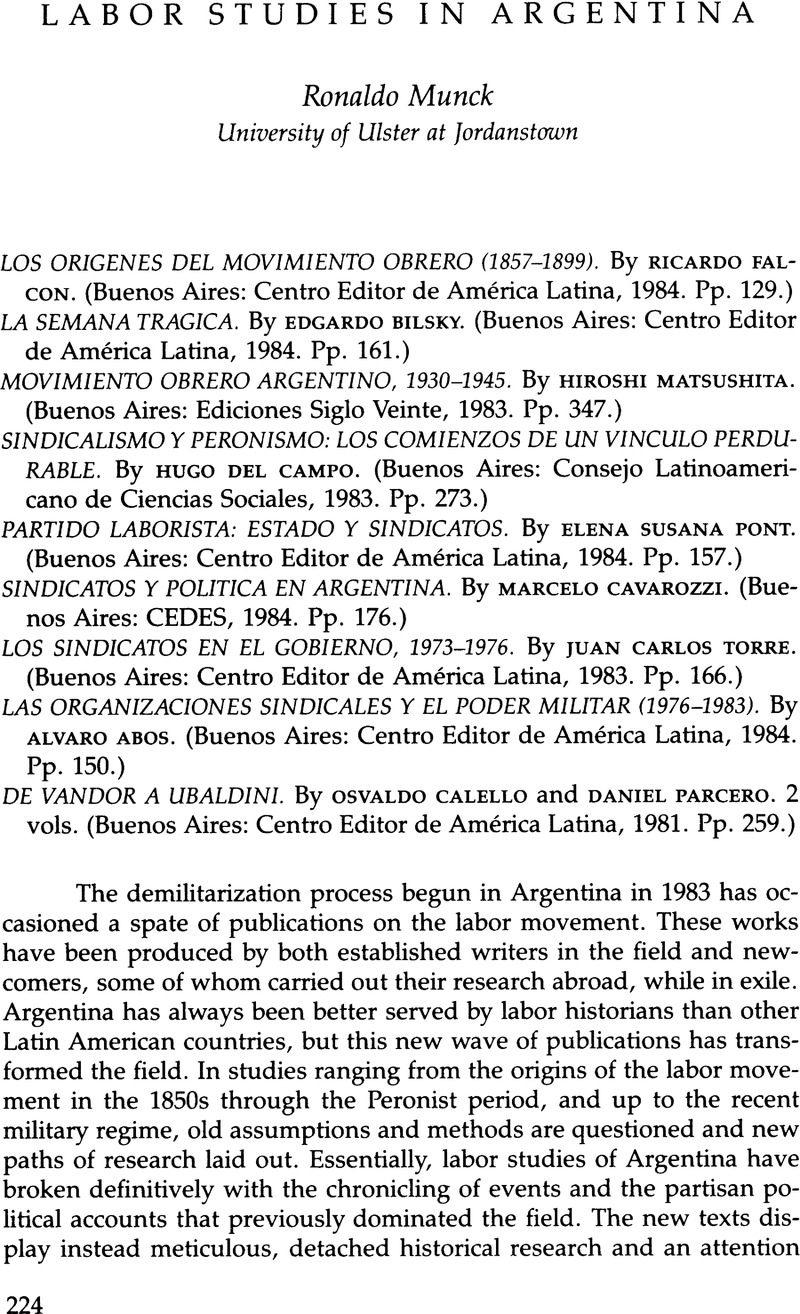Article contents
Labor Studies in Argentina
Review products
Published online by Cambridge University Press: 12 October 2022
Abstract

- Type
- Review Essays
- Information
- Copyright
- Copyright © 1986 by the University of Texas Press
References
Notes
1. See for example, P. Winn, “Oral History and the Factory Study: New Approaches to Labor History,” LARR 15, no. 2 (1979); and E. F. Sofer, “Recent Trends in Latin American Labor Historiography,” LARR 15, no. 1 (1980).
2. The institute's resources are listed in E. Gordon, M. Hall, and H. Spalding, “A Survey of Brazilian and Argentine Materials at the International Instituut voor Sociale Geschiedenis in Amsterdam,” LARR 8, no. 3 (1973).
3. M. Murmis and J. C. Portantiero, Estudios sobre los orígenes del Peronismo 1 (Buenos Aires: Siglo XXI, 1971).
4. H. Del Campo, Los anarquistas (Buenos Aires: Centro Editor de América Latina, 1971), and “La Semana Trágica,” Polémica, 1972.
5. D. James, “Rationalization and Working Class Response: The Context and Limits of Factory Floor Activity in Argentina,” Journal of Latin American Studies 13, no. 2 (1981).
6. See the contributions in Sindicalismo y regímenes militares en Argentina y Chile, edited by B. Galitelli and A. Thompson (Amsterdam: Centro de Estudios y Documentación Latinoamericanos, 1982).
7. L. Gutiérrez, “Condiciones de la vida material de los sectores populares en Buenos Aires, 1880–1914,” Revista de Indias 41, nos. 163–64 (1981).
8. See PEHESA, “Organización y cultura de los sectores populares,” Punto de Vista 15 (1982) and 18 (1983).
9. Agustín Tosco: conducción de un dirigente obrero, edited by J. Lannot, A. Amantea, and E. Sgniglia (Buenos Aires: Centro Editor de América Latina, 1984).
10. The Di Telia Oral History Collection is described in P. Schlinger, “Oral History Projects in Argentina, Chile, Peru, and Brazil,” International Journal of Oral History 5, no. 3 (1984), and used in part in G. Di Telia, “Working-Class Organization and Politics in Argentina,” LARR 16, no. 2 (1981).
- 1
- Cited by




